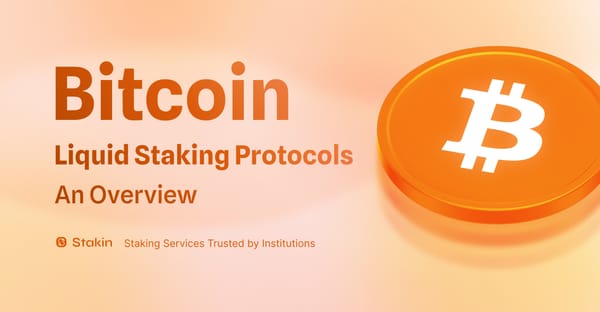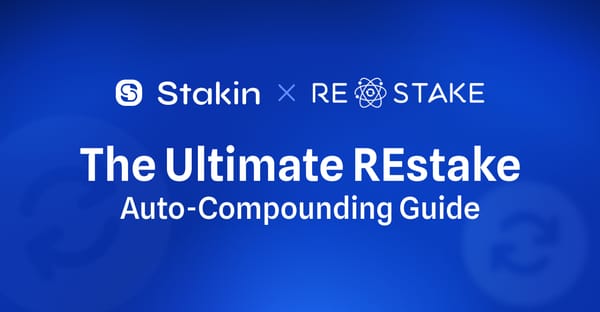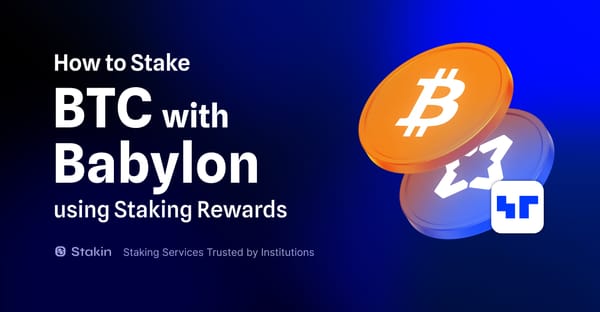Restaking and Bitcoin Staking
Learn how restaking protocols empower stakers to maximize rewards, enhance network security, and support the growth of emerging blockchain ecosystems.

What is Restaking?
Restaking is an innovative evolution of traditional staking in proof-of-stake (PoS) networks. It enables users to reuse or "restake" their existing stake or staking rewards to secure additional blockchain networks (often referred to as AVS for Actively Validated Services) or enhance the security of other protocols, all while using the same locked cryptocurrency—without needing to unbond or transfer their tokens.
This concept has now expanded to include Bitcoin staking, where Bitcoin (a proof-of-work asset) is integrated into restaking-like mechanisms to secure other networks. Through non-custodial protocols, BTC holders can actively contribute to the security of PoS ecosystems while retaining full ownership of their assets. Restaking is also evolving to encompass assets like stablecoins, real-world assets (RWAs), and more.
By leveraging the inherent security of PoS networks, restaking introduces a new layer of utility to crypto-assets like Bitcoin and staked assets such as staked Ethereum. This empowers restakers to maximize the value of their holdings while supporting the decentralization and security of multiple networks simultaneously.
How Restaking Works

Primary Stake
Users lock tokens on a network to participate in its consensus mechanism and earn rewards. While restaking initially emerged as an enhancement for PoS networks like Ethereum, it has since expanded to include other assets such as Bitcoin, stablecoins, and real-world assets (RWA). These assets, even without being locked in PoS networks, can also be integrated into restaking protocols to contribute to security and network functionality.
Bitcoin, for instance, can now participate in restaking-like mechanisms through non-custodial protocols, allowing BTC to support PoS networks and earn additional rewards without compromising asset ownership.

Restaking Mechanism
Staked assets or rewards are "restaked" through specialized protocols to secure additional networks, often referred to as Actively Validated Services (AVS). Restaking can also enable advanced functionalities, including cross-chain interoperability, decentralized security models, and new DeFi opportunities.

Earning Rewards
By restaking, users earn rewards from both the original network and the additional networks secured by their restaked assets. These rewards may come in the form of newly minted tokens or a share of transaction fees generated by the secured networks, enhancing the overall yield potential for restakers.
Benefits of Restaking
Increased Yield Potential
Restaking enables stakers to earn rewards from multiple networks using the same staked assets, significantly enhancing their earning opportunities.
Ecosystem Support
Restaking strengthens the security of new or emerging networks by leveraging the economic security that can be provided by established cryptocurrencies.
Capital Efficiency
Restaking allows stakers to generate additional rewards without unbonding or transferring their tokens, maximizing the efficiency and utility of their holdings.
Supported Restaking and BTC Staking Protocols
At Stakin, we collaborate with cutting-edge restaking and Bitcoin staking protocols to help you unlock the full potential of your assets:
EigenLayer
Staked ETH
Leverages restaking to expand the security of Ethereum's PoS network across additional services and applications.
Symbiotic
Staked ETH, BTC
Allows users to restake assets and secure emerging blockchain networks while earning native rewards.
Stroom
BTC
Liquid staking for Bitcoin on the Lightning Network.
Our Restaking Services
We offer a variety of restaking and Bitcoin staking solutions designed to meet diverse needs:
Public Vaults
Public, permissionless vaults operated under the Stakin brand, accessible to all users.
Dedicated Vaults
Dedicated vaults tailored for fine-tuned Actively Validated Services (AVS) strategies and regulatory compliance, ideal for institutional partners such as liquid restaking services (LRTs) and asset managers.
AVS Support
AVS testing and due diligence conducted prior to mainnet launches to ensure robust and secure participation.
Is Restaking and Bitcoin Staking Safe?
Both restaking and Bitcoin staking come with risks, including:
Smart contract vulnerabilities
Protocols rely on secure contracts that must be audited.
Slashing risks
If validators fail to meet network requirements, staked assets could be penalized.
Market risks
Fluctuations in token value and liquidity of derivative tokens can impact returns.

Certified Infrastructure
At Stakin, we partner with trusted protocols and offer robust, ISO27001-certified infrastructure to mitigate risks. Our services are backed by enterprise-grade SLAs, featuring uptime guarantees and slashing protection, ensuring a secure and reliable staking experience for our users.

Get Started with Restaking and Bitcoin Staking
Interested in maximizing the potential of your assets? Stakin provides the infrastructure and support to help you engage in restaking and Bitcoin staking securely and effectively. Reach out to learn more or explore the networks we support.
Learn more about Restaking
Read through our detailed content on restaking and Bitcoin staking to explore the full potential of these innovative mechanisms.
Have more questions?
You can contact our team via social media or email:
For institutional investors, Stakin has partnered with leading custodian providers.
We can help you navigate your questions concerning staking, security, and risk management.
Subscribe to Stakin Newsletter
Stay informed about the latest trends in the blockchain ecosystem and gain expert insights from a leading Web3 operator.


